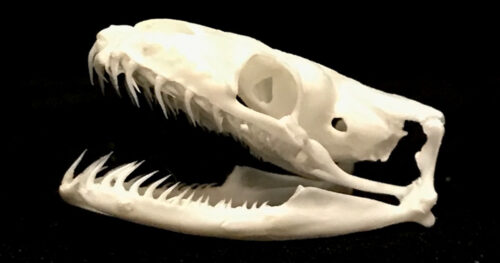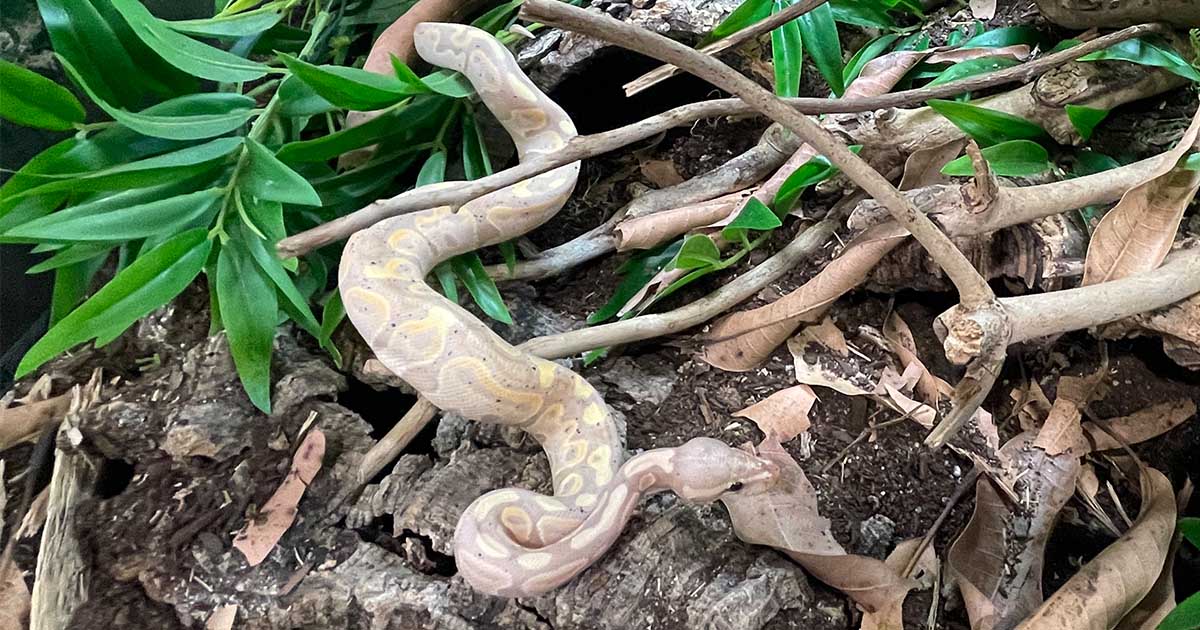Do ball pythons have teeth? It’s a question that intrigues many, from seasoned reptile lovers to curious onlookers. Ball pythons, known for their gentle demeanor and colorful appearance, are a favorite in the pet world. But beyond their calm nature and beautiful patterns, there’s a rich anatomy waiting to be explored. This article dives deep into the dental details of these captivating creatures. We’ll uncover the mysteries of their teeth, revealing their purpose and importance. So, whether you’re a dedicated snake owner or just starting your reptilian journey, stay with us for an enlightening exploration.
The Dental Anatomy of Ball Pythons
When we think of snakes, the image that often comes to mind is of a creature with sharp fangs ready to strike. But what about ball pythons? Do ball pythons have teeth that fit this menacing image? The answer is both intriguing and enlightening.
Ball pythons possess a set of teeth, but they’re quite different from the fangs we often imagine. These reptiles have around 25 to 35 teeth distributed in several rows along their upper and lower jaws. Unlike the singular, larger fangs of some venomous snakes, ball python teeth are smaller, yet numerous.
Each tooth is curved and needle-like, measuring between 1/8 and 1/4 of an inch. This unique design, pointing towards the back of their mouth, ensures that escape becomes a near impossibility once they grip their prey.
But it’s not just the shape that’s fascinating. The structure of these teeth is a marvel of nature. They’re hollow, making them lightweight yet robust. Their sharp tips are perfectly designed to penetrate the skin of their prey, allowing the snake to maintain a firm grip. As the snake grows, these teeth undergo a process of shedding and replacement, ensuring they always have the tools needed for their next meal.
This dental anatomy plays a pivotal role in the ball python’s survival, showcasing nature’s impeccable design and the adaptability of these creatures.
The Purpose Teeth
The teeth of any creature aren’t just for show; they serve a distinct purpose. For ball pythons, their teeth are instrumental in their survival. But how exactly do these small, curved teeth aid these reptiles in their daily lives?
First and foremost, ball python teeth are essential for feeding. When these snakes spot a potential meal, they strike swiftly. Their teeth, curved and pointing backward, grip onto the prey, ensuring it can’t wriggle free. This design is nature’s way of ensuring the prey remains trapped.
But the role of the teeth doesn’t end with the initial bite. As the python begins to swallow its prey, the teeth work in harmony with the snake’s powerful jaw muscles. They help guide the food down the esophagus. This synergy between teeth and muscles is especially crucial since ball pythons can consume prey larger than their head, thanks to their ability to dislocate their jaw.
Interestingly, the seemingly modest teeth of a ball python serve a grand purpose. These tiny dental structures are pivotal not just for feeding but also for their defense mechanisms, ensuring their continued existence in the wild.
Biting Behavior of Ball Pythons
While ball pythons are often known for their calm nature, it’s crucial to acknowledge their wild instincts. Occasional bites, although not common, do occur as part of their innate drive to safeguard themselves.
Most ball python owners will attest to the fact that these snakes are more likely to curl into their namesake ball when threatened, rather than lash out. This defensive posture, where they tuck their head inside a coil of their body, is their typical response to perceived danger. However, there are instances when they might resort to biting.
Stress, fear, or mistaking a hand for food during feeding times can lead to a bite. Their teeth, though sharp, are small, making the bite more surprising than painful. Comparatively, it resembles a scratch from a household pet like a cat.
For those who handle ball pythons regularly, understanding their behavior is crucial. Recognizing signs of stress or agitation can help prevent unwanted bites. Observing their body language, such as hissing or a tense body posture, can provide cues about their comfort level.
In summary, while ball pythons can bite, it’s a rare occurrence. With proper handling, understanding, and respect for these creatures, the chances of experiencing a bite are minimal.
What to Do in Case of a Ball Python Bite
Despite our best efforts, unexpected situations can arise. If a ball python bite ever becomes your reality, here’s your roadmap to handle it with grace:
- Stay Steady: A bite can be startling. Yet, jerking away might worsen things. Hold your ground, and the snake will likely release its hold.
- Unhook with Care: A ball python with teeth can pose some challenges. If the python remains latched, gently disengage its teeth. Their unique backward curve means a straight pull could be harmful.
- Prioritize Cleanliness: After the snake lets go, cleanse the area. Warm water and a touch of soap can fend off potential infections.
- Add a Protective Layer: Post-cleaning, dab on some antiseptic cream. It acts as a shield against germs.
- Keep a Watchful Eye: Monitor the bite spot over the next few days. If there is swelling, redness, or pus, it’s time to see a doctor.
- Reflect and Learn: Ponder on the events leading up to the bite. Recognizing stress signs in the future can prevent a repeat.
- Consult if Unsure: Ball python bites are seldom severe. But if something feels off, don’t hesitate to seek medical advice.
In the grand scheme, ball pythons aren’t venomous. Their bites, while unexpected, aren’t typically grave threats. Yet, attentive care ensures a hassle-free healing process.
Conclusion
The world of reptiles is vast and intriguing, and among its residents, the ball python stands out. Their gentle demeanor, captivating patterns, and unique anatomy make them a favorite among enthusiasts. But a question often arises: Do ball pythons have teeth? As we’ve delved deeper into this topic, we’ve uncovered that not only do they have teeth, but these dental structures play a vital role in their survival.
These teeth, essential for feeding and defense, highlight the intricate balance of nature. For those who share their homes with these creatures or are considering doing so, understanding this aspect deepens the bond and appreciation between the keeper and the pet. Knowledge, combined with care and respect, ensures a harmonious relationship, celebrating the wonders of the ball python.
The post Do Ball Pythons Have Teeth? appeared first on XYZReptiles.



